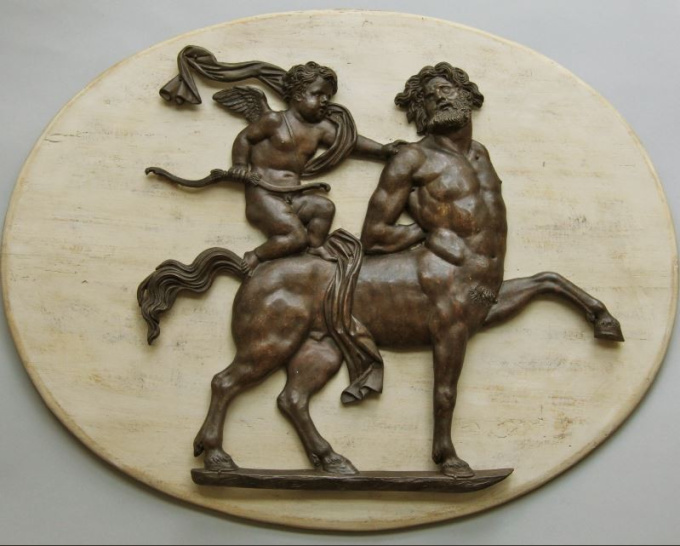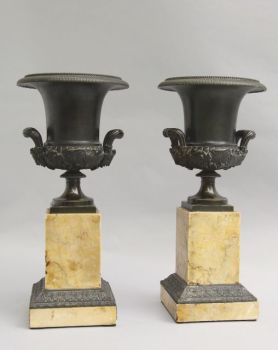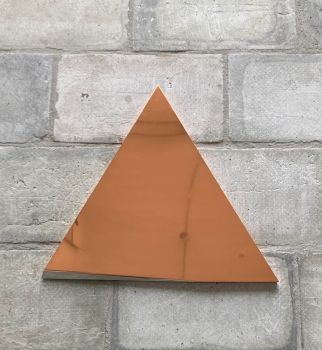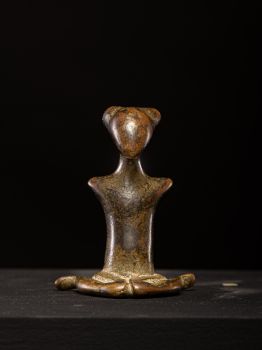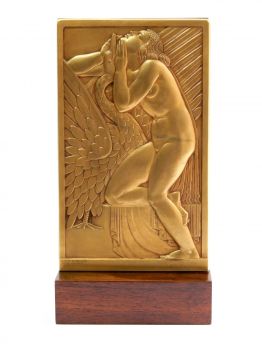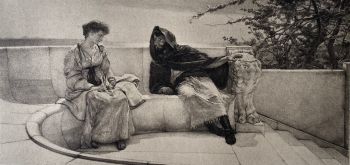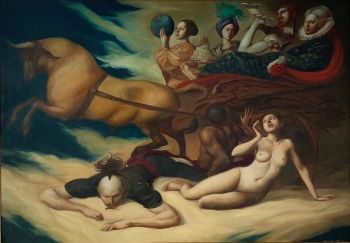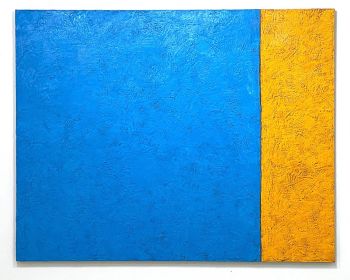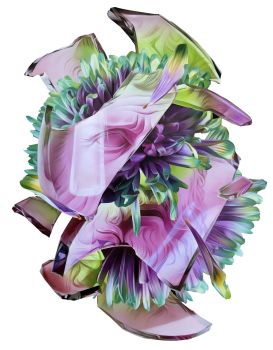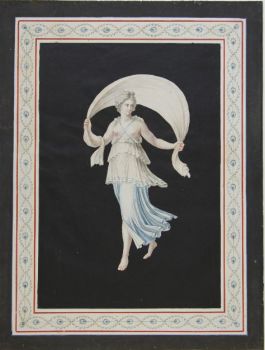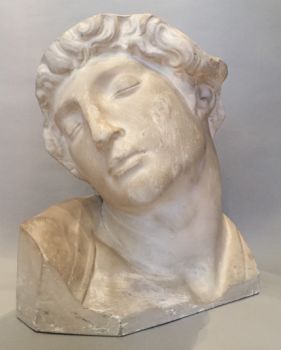Two Centaurs, France or Italy late 18th
Artista Desconocido
PegamentoMaderaPegamento para huesosTiza
53 ⨯ 68 cm
ConditionRestored
Precio a consultar
Robert Schreuder Antiquair
- Sobre la obra de arteTwo large wooden medallions, each with a centaur of bronzed pâte. Pâte is a mixture of chalk, silkpaper, bone-glue and water, which is very suited for making refined details.
One of the pictures is based on a fresco of a centaur, captured by a bacchante. This fresco was discovered in 1748 in Pompeï. It was already depicted in the series 'Le Antichità di Ercolano Esposte', that was published from 1757 onwards. The other centaur, with Amor on his back, seems to be inspired by the Borghese centaur, a marble statue that was in the Borghese collection and that was bought in 1807 by Napoleon. It is now in the Louvre in Paris. Statues or engravings of Centaurs were beloved objects acquired on Grand Tour in Italy.
The original wooden medallions got a new patina; the pâte has some restaurations. - Sobre el artista
Puede suceder que un artista o creador sea desconocido.
Algunas obras no deben determinarse por quién está hecho o por (un grupo de) artesanos. Algunos ejemplos son estatuas de la Antigüedad, muebles, espejos o firmas que no son claras o legibles, pero también algunas obras no están firmadas en absoluto.
También puedes encontrar la siguiente descripción:
•"Atribuido a …." En su opinión, probablemente una obra del artista, al menos en parte.
•“Estudio de….” o “Taller de” En su opinión, una obra ejecutada en el estudio o taller del artista, posiblemente bajo su supervisión
•“Círculo de…” En su opinión, una obra del período del artista que muestra su influencia, estrechamente asociado con el artista pero no necesariamente su alumno.
•"Estilo de …." o “Seguidor de…”. En su opinión, una obra ejecutada al estilo del artista pero no necesariamente por un alumno; puede ser contemporáneo o casi contemporáneo
•"Manera de …." En su opinión una obra al estilo del artista pero de fecha posterior
•"Después …." En su opinión, una copia (de cualquier fecha) de una obra del artista
•“Firmado…”, “Fechado…” o “Inscrito” En su opinión, la obra ha sido firmada/fechada/inscrita por el artista. La adición de un signo de interrogación indica un elemento de duda.
•“Con firma…”, “Con fecha…”, “Con inscripción…” o “Lleva firma/fecha/inscripción” en su opinión la firma/fecha/inscripción ha sido añadida por alguien que no es el artista
¿Está interesado en comprar esta obra de arte?
Artwork details
Related artworks
- 1 - 4 / 12
- 1 - 4 / 9
Unbekannter Künstler
A white jade ‘Lotus Seedpod and Bug’ carving, Qing dynasty, 18th century18th century
Preis auf AnfrageMenken Works of Art
Unbekannter Künstler
Chinese gilt bronze censer, Xuande mark, 18th century, Qing dynasty18th century
Preis auf AnfrageMenken Works of Art
1 - 4 / 24Unbekannter Künstler
Diamantarmband aus dem 18. Jahrhundert mit 2000 Jahre alten Intaglios1790
€ 23.000Adin Fine Antique Jewellery
 Kuratiert von
Kuratiert vonDanny Bree
1 - 4 / 24Unbekannter Künstler
Antike russische Holzikone: Erzengel Gabrielearly 17th
Preis auf AnfrageKunsthandel H.W.C. Dullaert Icons
Rene Rietmeyer
''Installation Miami-Beach 2006''2006
Preis auf AnfrageEuropean Cultural Centre Collection
1 - 4 / 24Unbekannter Künstler
Set of eight gouache drawings1799 - 1801
Preis auf AnfrageRobert Schreuder Antiquair
1 - 4 / 12

